Hey Amazing Hackers, This is TrffnSec And today I’ll be talking about the first bug i found on a NASA ( VDP ) on bugcrowd.
Nasa’s In-Scope Wildcards —
- *.nasa.gov
- *.usgeo.gov
- *.scijinks.gov
- *.globe.gov
- *.mafstatus.com
- *.nsstc.com
- *.nsstc.org
Let’s dive in…
I rolled out of bed around 1 pm, lazily lingering for another 30 minutes before finally grabbing my laptop. The day before, I had collected a bunch of NASA’s subdomains using Subfinder because why not, right?
With nothing better to do, I thought, “Let’s take a peek at those subdomains.” So, I ran:
cat nasa-subs.txt | https-toolkit -sc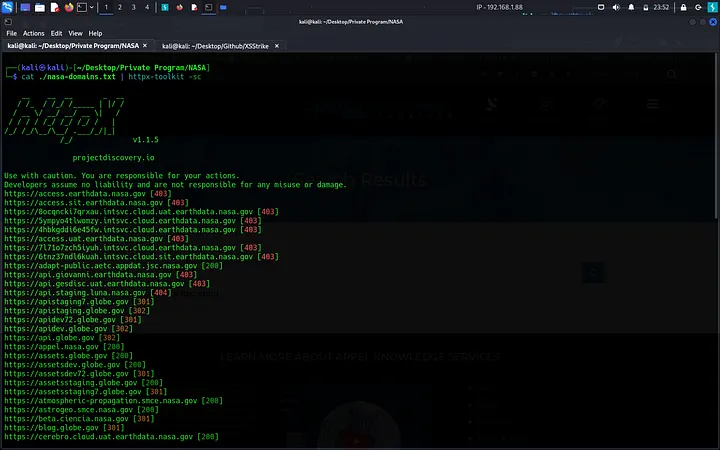
Boom! I had all the status codes at my fingertips. Slowly, I started testing each subdomain, one by one, until I stumbled upon a particularly intriguing one (let’s call it abcd.nasa.gov).
There it was a search bar, just sitting there, tempting me. The first vulnerability that popped into my mind? You guessed it right! XSS. I typed in abcd, and voilà, it reflected on the page.
Time to get a little creative. I tried abcd<h1>abcd</h1> — the HTML reflected too. Even the <img> tag worked. But <script>alert()</script>? No luck.
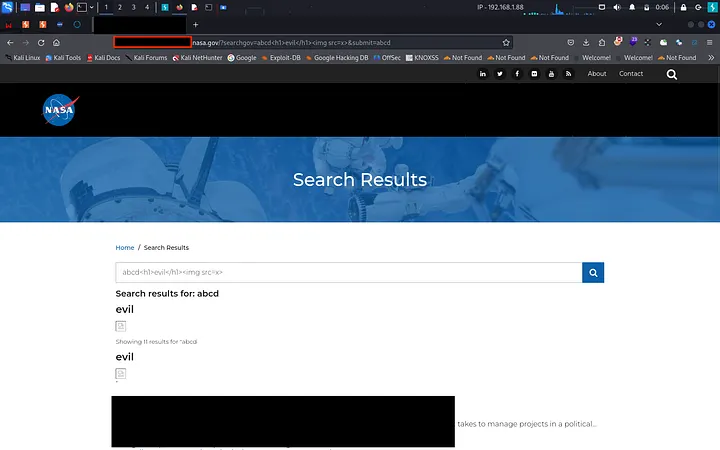
Alright, time to dig deeper. I fired up xsstrike to hunt for that elusive XSS. The result? Over 500+ false positives. Sifting through each one? No thanks.
So, I took to Twitter for a little collaboration. Sent out a tweet,
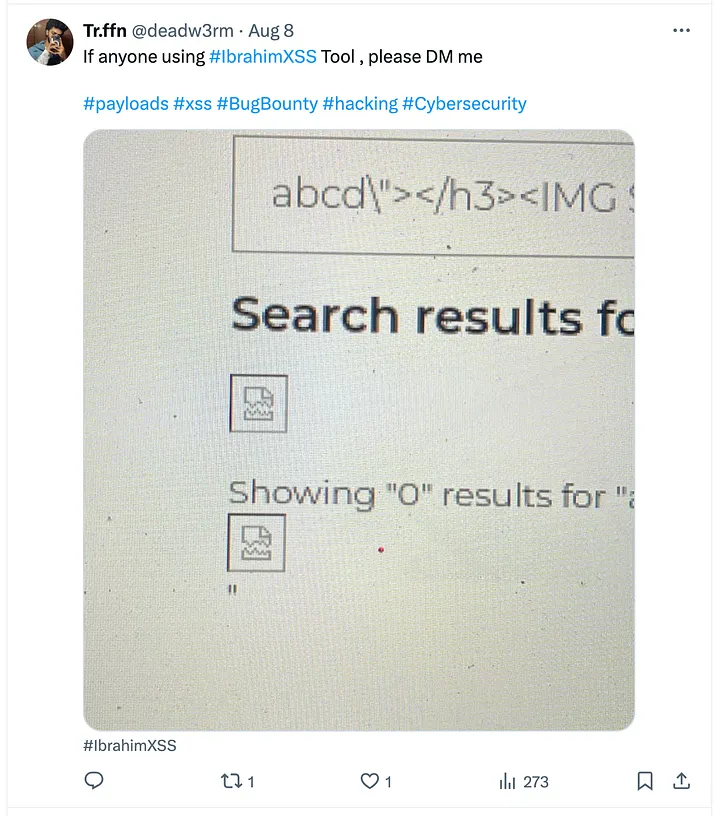
but… crickets.

No one responded.
I thought to Report that HTML Injection.

And P5’s , they wont accept. 🤐
Then, out of nowhere, the creator of the tool, Ibrahim, messaged me directly.
He suggested buying the tool for full access. I waited a bit longer, and guess what? He started offering trial usage of the tool, promoting through twitter.

You bet I grabbed it. Time to see what this tool could do…
With IbrahimXSS ready to roll, I needed some serious firepower.
So, I grabbed XSS payloads from every corner of the web — Twitter ( LostSec ), GitHub, Telegram, PortSwigger, HackerOne reports, you name it. I combined them all into one main file.
After skimming through the tool’s manual, I realized it could inject payloads into parameters.. and thats how a tool works.
But It should be with 0 False Positives.
That’s why i’m Choosing IbrahimXSS aka xss0r. I noticed one more Usage: I could inject payloads directly by tagging {payload} in the requests, This one is so useful to POST Requests.
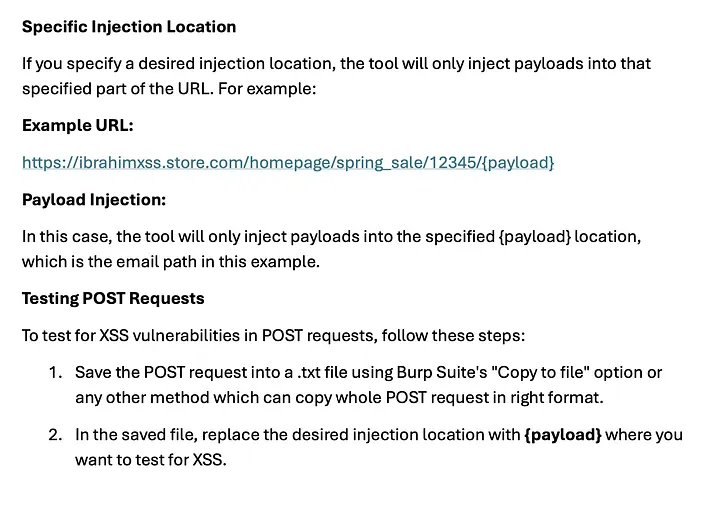
So, I saved the target URL to a file named url.txt:
https://abcd.nasa.gov/?searchgov=abcd{payload}&submit=abcd{payload}Without The ‘{payload}` , This Tool will work on all the parameters.
With everything set, I unleashed the IbrahimXSS/Xss0 tool. It started churning through my massive 30k lines XSS payloads file. After some time…

BOOM. It was done.
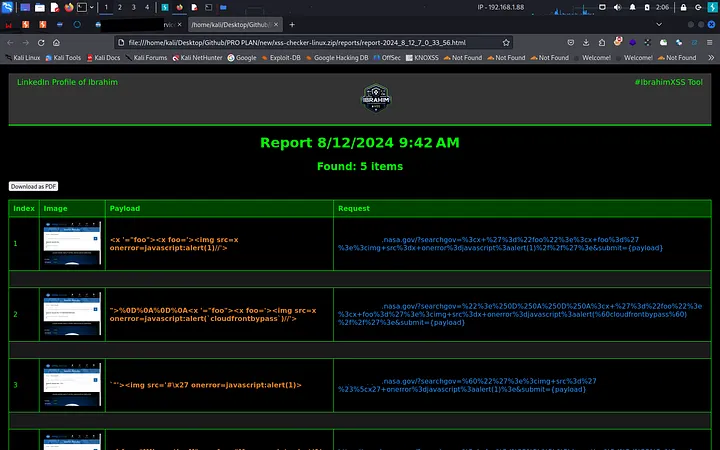
The output file revealed five successful XSS hits. I opened them, and there it was a shiny, exploitable XSS vulnerability on a NASA subdomain.
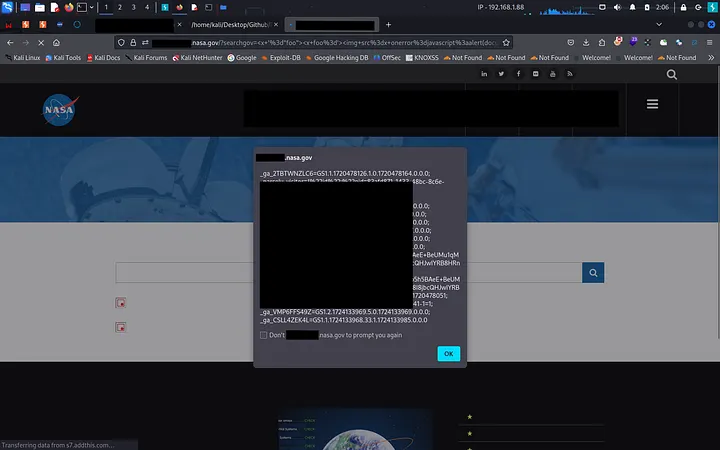
Feeling pumped, I reported the bug. But then, NASA hit me with a curveball they marked it as “informative” and a duplicate of my previous HTML injection report.
Press enter or click to view image in full size

I asked them to Re-Verify it.
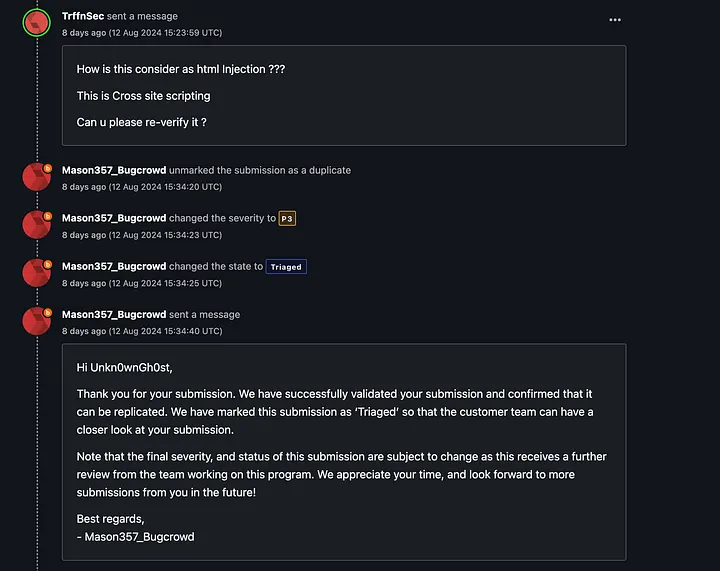
They Accepted my Report.

And thats how I got Placed in NASA’s HOF

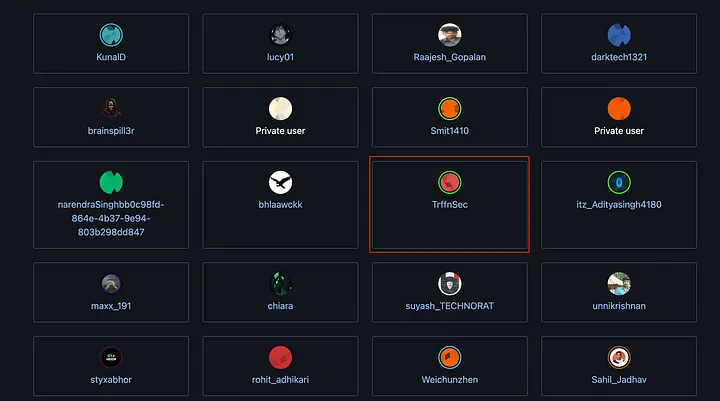
Thanks for joining me on this bug-hunting journey! Your support rocks. Let’s keep squashing bugs together! 🐜🛠️
Next Coming WriteUp is Apple’s HOF

Follow for more






